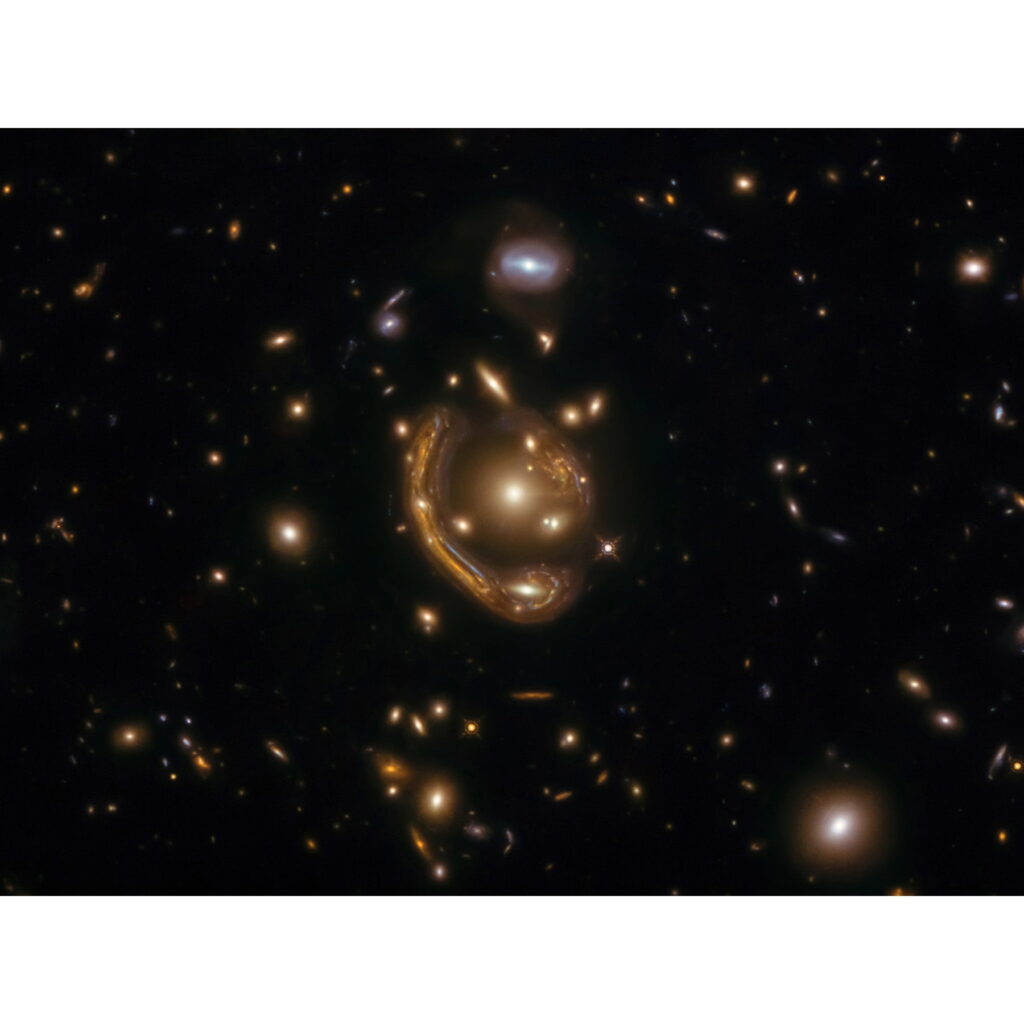
Audience
- Sentiment: positive
- Political Group: moderate
- Age Group: 18-35
- Gender: both
Overview
- The Euclid telescope has discovered an unprecedented cosmic phenomenon known as an Einstein ring.
- An Einstein ring is formed when the light from a distant galaxy is bent around a foreground galaxy due to gravitational lensing.
- The mission aims to create a comprehensive map of billions of galaxies to further explore mysteries like dark matter and dark energy.
The Wonders of the Universe: Discovering an Einstein Ring with the Euclid Telescope
Imagine standing outside on a clear night, the sky dark and vast, dotted with countless twinkling stars. The universe feels mysterious, doesn’t it? For centuries, people have gazed up at the night sky, wondering what lies beyond our planet. Today, thanks to advanced technology and the efforts of scientists, we’re uncovering some of those cosmic secrets. One of the latest exciting discoveries comes from the European Space Agency’s Euclid mission, which has revealed a rare cosmic phenomenon known as an Einstein ring!
What is an Einstein Ring?
First, let’s dive into what exactly an Einstein ring is. Picture this: a bright light source, such as a distant galaxy, is positioned perfectly behind another galaxy. The light from that faraway galaxy travels toward us, but instead of arriving directly, it gets bent around the galaxy in the foreground due to its immense gravitational force. This bending of light creates a circle or “ring” effect around the foreground galaxy. It sounds like something straight out of science fiction, right? But it’s a real phenomenon predicted by the famous physicist Albert Einstein in his theory of general relativity.
What’s astonishing is that Einstein rings are incredibly rare—less than 1% of galaxies exhibit this effect! So, when astronomers detected one while looking at the first data from the Euclid telescope, it was a monumental moment in astronomy.
The Discovery: NGC 6505 and Its Cosmic Neighbors
The particular Einstein ring discovered by the Euclid mission centers around a galaxy called NGC 6505, which is located a whopping 590 million light-years away from Earth! To put that into perspective, if you could somehow travel at the speed of light, it would take you 590 million years to reach it. The light bending around NGC 6505 allows us to see distorted light from another unnamed galaxy situated 4.42 billion light-years away. That’s right—a galaxy that was born long before our planet even existed!
The images and data collected from this discovery offer astronomers a unique view into the layout and structure of these galaxies. Without the gravitational lensing effect—the bending of light—we would be unable to see these distant galaxies so clearly. In a way, NGC 6505 acts like a natural magnifying glass! This innovative approach to observing the universe opens up new doors for understanding cosmic structures and phenomena.
Euclid: The Space Telescope with a Mission
Launched in July 2023, the Euclid telescope is no ordinary piece of technology. It has been designed to observe the universe in unprecedented detail, allowing astronomers to investigate celestial objects without the interference of Earth’s atmosphere. Unlike ground-based telescopes, which have to deal with atmospheric turbulence (you know those blurry images you see when you try to take a picture on a windy day?), Euclid floats high above, in space, where it can take crisp, clear images of the cosmos.
Euclid’s mission goes beyond simply finding beautiful celestial phenomena like the Einstein ring. Its primary goal is to create a comprehensive map of billions—yes, billions—of galaxies. By doing so, researchers aim to deepen our understanding of dark matter and dark energy, mysterious substances that seem to make up most of our universe but remain elusive and poorly understood. Dark matter, for instance, doesn’t emit any light or energy, making it invisible to our traditional observation methods. However, its presence is felt—you could think of it as the unseen glue holding galaxies together, but what exactly it is, remains one of the great puzzles of modern astrophysics.
Why is This Important?
Understanding dark matter and dark energy is crucial for grasping the larger story of the universe. Cosmologists believe that dark energy is responsible for the accelerated expansion of the universe. To put it in simpler terms, our universe isn’t just expanding; it’s speeding up! This revelation has raised important questions: Is this expansion going to continue forever? Will galaxies eventually drift so far apart that they will escape each other’s gravitational pull? Or is there a chance that the universe could collapse back in on itself?
With every discovery made by missions like Euclid, we get a step closer to answering these questions. The chance to observe events like Einstein rings gives us clues about the distribution of matter in the universe, both visible and invisible. The more we learn, the clearer the picture of the universe becomes—like completing a giant jigsaw puzzle.
The Beauty of Scientific Discovery
If you think about it, astronomy is not just about the science; it’s also about the passion and curiosity that drives people to look up at the stars. The scientists working on the Euclid mission are explorers in their own right, searching for answers in the depths of space. Each discovery brings with it a sense of wonder and excitement.
Imagine working on a project where every day could lead to the unveiling of something completely new! That thrill must be exhilarating. It’s a bit like reading an engaging book where each page reveals new characters and plot twists. Except in this case, the story takes place on a scale so massive that it’s difficult for any of us to truly comprehend.
What’s Next for Euclid?
The findings regarding the Einstein ring are just the beginning. As Euclid continues to scan the universe, it will provide even more valuable data and discoveries. The mission is set to unravel more mysteries of the cosmos, leading to potentially groundbreaking insights into topics such as galaxy formation, the behavior of dark matter, and the acceleration of the universe’s expansion.
As we eagerly await these upcoming revelations, one thing is clear: space is filled with secrets longing to be unveiled. The apparent endlessness of the cosmos reminds us of how little we know but also how much we have yet to learn.
Conclusion: What do You Think?
This incredible discovery of an Einstein ring captured our imaginations and sparked a conversation about the incredible universe we live in. It reminds us that even in a time filled with technology and information at our fingertips, there is still so much mystery to explore.
What do you think about discovering phenomena like the Einstein ring? Does it inspire you to learn more about astronomy or even think about a future in science? Please share your thoughts in the comments below!






